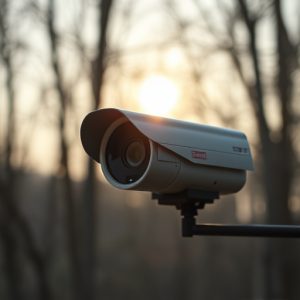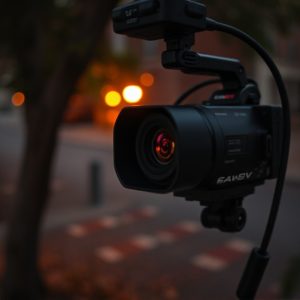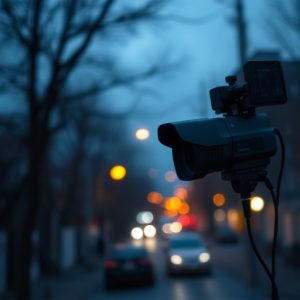Countering Battery-Powered Wireless Spy Cameras: A Comprehensive Sweep Guide
Battery-powered wireless spy cameras have revolutionized counter-surveillance methods with their cov…….
Battery-powered wireless spy cameras have revolutionized counter-surveillance methods with their covert flexibility. Operating autonomously on rechargeable batteries, these devices allow remote access and monitoring via smartphone apps or web interfaces. Featuring HD video, night vision, motion detection, and AI object recognition, they offer valuable insights in hard-to-reach locations across various industries. However, professionals combat privacy threats using UV light detectors and thermal imaging technology to uncover hidden cameras during counter-surveillance sweeps. These compact, battery-powered cameras also provide discreet and convenient monitoring for home security, pet tracking, or surveillance purposes through seamless wireless connectivity.
In today’s digital age, privacy concerns have escalated with the proliferation of battery-powered wireless spy cameras. These stealthy devices, often hidden in plain sight, pose a significant threat to personal and professional security. This comprehensive guide navigates the counter surveillance sweep process, equipping professionals with strategic planning, technical execution, and post-sweep analysis techniques to detect and prevent these hidden threats. Understanding the capabilities of battery-powered wireless spy cameras is the first step towards safeguarding your environment.
- Understanding Battery-Powered Wireless Spy Cameras: Uncover Their Capabilities
- Planning the Counter Surveillance Sweep: Strategies and Preparation
- Execution: Technical Techniques for Detecting Hidden Cameras
- Post-Sweep Analysis: Ensuring Comprehensive Coverage and Future Prevention
Understanding Battery-Powered Wireless Spy Cameras: Uncover Their Capabilities
Battery-powered wireless spy cameras have revolutionized counter-surveillance, offering a covert and flexible solution for professionals. These devices are designed to operate autonomously, drawing power from rechargeable batteries, eliminating the need for complex wiring or constant power sources. Their wireless capabilities allow for remote access and monitoring via smartphone apps or web interfaces, ensuring discreet operation without alerting potential targets.
These spy cameras boast advanced features such as HD video recording, night vision capabilities through infrared technology, and motion detection alerts. Some models even incorporate AI-driven object recognition, enabling them to distinguish between people, vehicles, and other defined objects. This level of adaptability makes battery-powered wireless spy cameras a versatile tool for various industries, from security professionals to private investigators, providing valuable insights in hard-to-reach or remote locations.
Planning the Counter Surveillance Sweep: Strategies and Preparation
When planning a counter surveillance sweep, thorough preparation and strategic thinking are paramount to ensure maximum effectiveness against hidden battery-powered wireless spy cameras. The first step involves conducting a comprehensive risk assessment to identify potential sources of surveillance within the target area. This includes meticulously scanning for any visible signs of camera installations, such as peculiar markings on walls or suspicious devices, while also leveraging advanced technology like thermal imaging and motion detection sensors to uncover concealed cameras.
During this phase, creating a detailed plan that allocates resources efficiently is crucial. This involves determining the optimal placement of counter surveillance equipment, including high-quality detectors designed to identify wireless signals emitted by spy cameras. Additionally, teams should be briefed on standard operating procedures to maintain discreteness and ensure every member understands their role in the sweep. Effective communication channels must also be established to facilitate quick dissemination of information during the operation.
Execution: Technical Techniques for Detecting Hidden Cameras
Execution: Technical Techniques for Detecting Hidden Cameras
In today’s digital era, the use of battery-powered wireless spy cameras has become a common tactic for covert surveillance. Professionals must be adept at detecting these hidden devices to maintain privacy and security. One effective method involves utilizing specialized UV light detectors. Many modern spy cameras emit ultraviolet light during operation, leaving a distinct mark that can be visualized under UV lighting. This technique allows experts to uncover concealed cameras in various settings, from homes to office spaces.
Additionally, professionals employ advanced thermal imaging technology to identify temperature anomalies indicative of hidden cameras. Battery-powered devices often generate heat due to their power consumption, creating localized hot spots. Thermal scanners can pinpoint these areas, leading to the discovery of covert recording equipment. Combining UV lighting and thermal imaging enhances the chances of finding even the most sophisticated battery-powered wireless spy cameras, ensuring a comprehensive counter-surveillance sweep.
Post-Sweep Analysis: Ensuring Comprehensive Coverage and Future Prevention
In the age of advanced technology, battery-powered wireless spy cameras pose a unique challenge for professionals. This guide has equipped readers with the knowledge to navigate and counteract these hidden threats effectively. From understanding the capabilities of such devices to executing precise sweep techniques and analyzing post-sweep data, the strategies outlined here ensure comprehensive counter surveillance. By staying ahead of these sophisticated methods, individuals can safeguard their privacy and protect sensitive information in an increasingly connected world.


